Integrating Sage with Microsoft Programs
A vast expansion of markets for software solutions entails an ever-diversifying landscape of opportunity. But it can also present individuals and businesses with an overwhelming array of decisions. Deciding on how to upgrade or transition to new software platforms can present challenges. At the same time, new software solutions are also evolving as add-ons or integrations with legacy software platforms.
One of the most highly valued integrations exists between software giants Sage and Microsoft. These two technological companies account for millions of users around the globe. With such a large share of the global market, it’s no surprise that businesses of many sizes and industries recognize a need for integrating the two platforms. Many companies have built their operations on the legacy of Microsoft products. But Sage offers a unique set of specialized functions that have also become integral to more effective and refined business operations.
Integrating the two sets of solutions has presented a critical opportunity for numerous businesses. Ditching a legacy system to build anew can be onerous for business operations. However, by integrating rather than replacing existing software systems, companies are seizing newfound ways to develop.
Sage offers various products that can be seamlessly integrated with existing Microsoft programs for a more specified approach to business functions such as accounting, payroll, and human resource management.
In this article, we explore how a company can integrate Sage software with various Microsoft programs.
Integrating your Sage software with Microsoft programs
Sage and Microsoft have been developing on similar timelines. Founded in 1975, Microsoft rose to dominance in the 1980s, while Sage was founded in 1981 and witnessed rapid growth. In 2015, the two brands began direct conversations about an integrative relationship. Sage recognized the vast expansion and flexibility of cloud-based technologies and understood Microsoft to be a suitable partnership in staying tuned with these more mobile innovations. Integration capabilities for the two software solutions have existed along the way, but 2016 produced the first active partnership between the two software moguls with the creation of Sage 50c.
Sage 50c
Perhaps the most notable and celebrated integration between Sage and Microsoft resulted from the creation of Sage 50c. This partnership’s mainstay is the integration of Sage’s popular desktop interface with Microsoft 365 and OneDrive.
Sage 50c can continue to be used without Microsoft, but Sage’s software can be integrated with existing users of Microsoft’s cloud services or new customers. Although the Sage 50c interface remains the same, there are many new integrative features. For example, users can integrate a scheduled backup option for automatic upload to Microsoft’s OneDrive. Sage 50c can also integrate accounts data to synchronize with Excel documents in the cloud, accessible through Office 365 applications and Sage add-ins.
For Sage’s existing Intelligence Reporting feature, there is now no required setup. The intelligent reporting functions can be accessed through the Sage Intelligence app within the Microsoft 365 options folder. Reports can be replicated for storage in OneDrive, allowing users to access the data remotely while permitting non-Sage users’ editing capacity through Excel. These reports can also be generated in reverse, originating in Excel and saved for access through the OneDrive storage.
This overview of integrating Sage 50c with Microsoft 365 is not intended to be exhaustive. Instead, it highlights how a core Sage solution can be seamlessly integrated with existing Microsoft platforms. Both Sage and Microsoft offer further information on the subject.
Sage 300
Another widely used product is the Sage 300 software. This solution works in combination with Sage Contact and integrates with Microsoft 365. Using Sage 300 and Sage Contract allows users to view customer information through Microsoft’s Outlook. Integration of these Sage solutions with Outlook permits a business to overview customers’ credit data, contact information, salesperson, and price level. A company can also view customer history, communications, and notes or comments entered in Sage 300.
Integration of Sage and Microsoft’s platforms is a simple process. The process begins with verifying your existing or new Microsoft Office 365 account with Sage for compatibility with Sage 300. Following an activation email, the integration starts by logging into Office 365 while also adding users and granting them access to Sage apps. The integration proceeds by installing the Office 365 connector on the Sage 300 server. The connector and necessary components can be downloaded from the Sage Business Center. A Sage 300 Office Configuration Wizard will be added to the Start menu that can be clicked for further installation steps.
Sage 100
Beyond the many integration opportunities with Office 365, Sage 100 offers another of the plentiful options for integrating with Microsoft products. Sage 100 may be integrated with Microsoft Dynamics CRM. Combining these two solutions can assist in preventing data entry errors or duplicating data entry.
Integration of Sage 100 involves the vast financial information of Sage services in tandem with Microsoft’s ability to manage data related to customer relations. A variety of third-party options can further elevate the integration of Sage 100 with Microsoft’s Dynamic CRM to track updates, automate tasks, and log data.
Resources
This article highlights a few ways a business can integrate Sage solutions with Microsoft programs, but there are further opportunities available. Exploring these integrations can be an exhaustive effort. Many companies will find that a technology expert can vastly simplify and expedite implementing these viable integrations.
Even further, the benefits of integrating Sage with Microsoft programs can be critically beneficial. A company or enterprise stands to improve productivity, increase security, and ensure critical data is accessible.
For experienced advice and support on software integrations, you can explore expert technology solutions for business strategy by setting up a consultation with Network Coverage.
